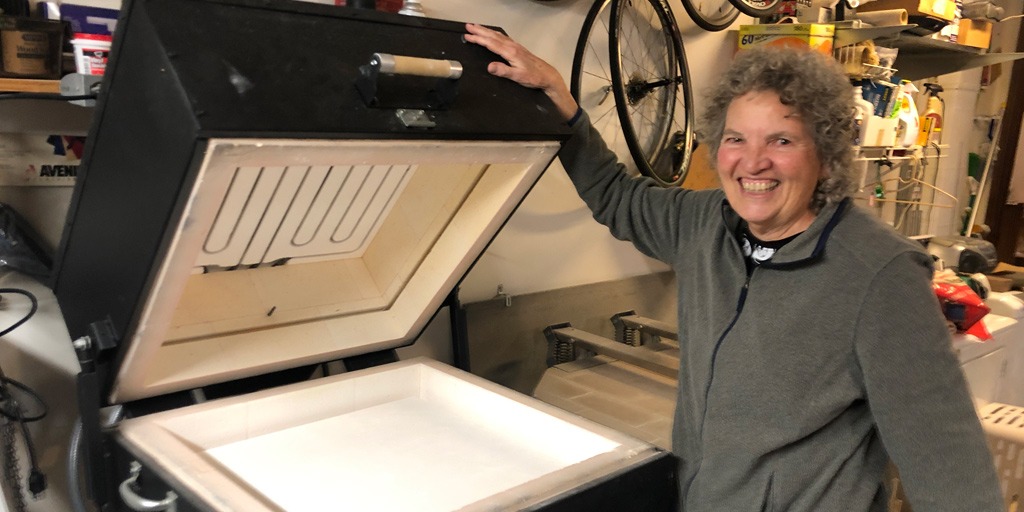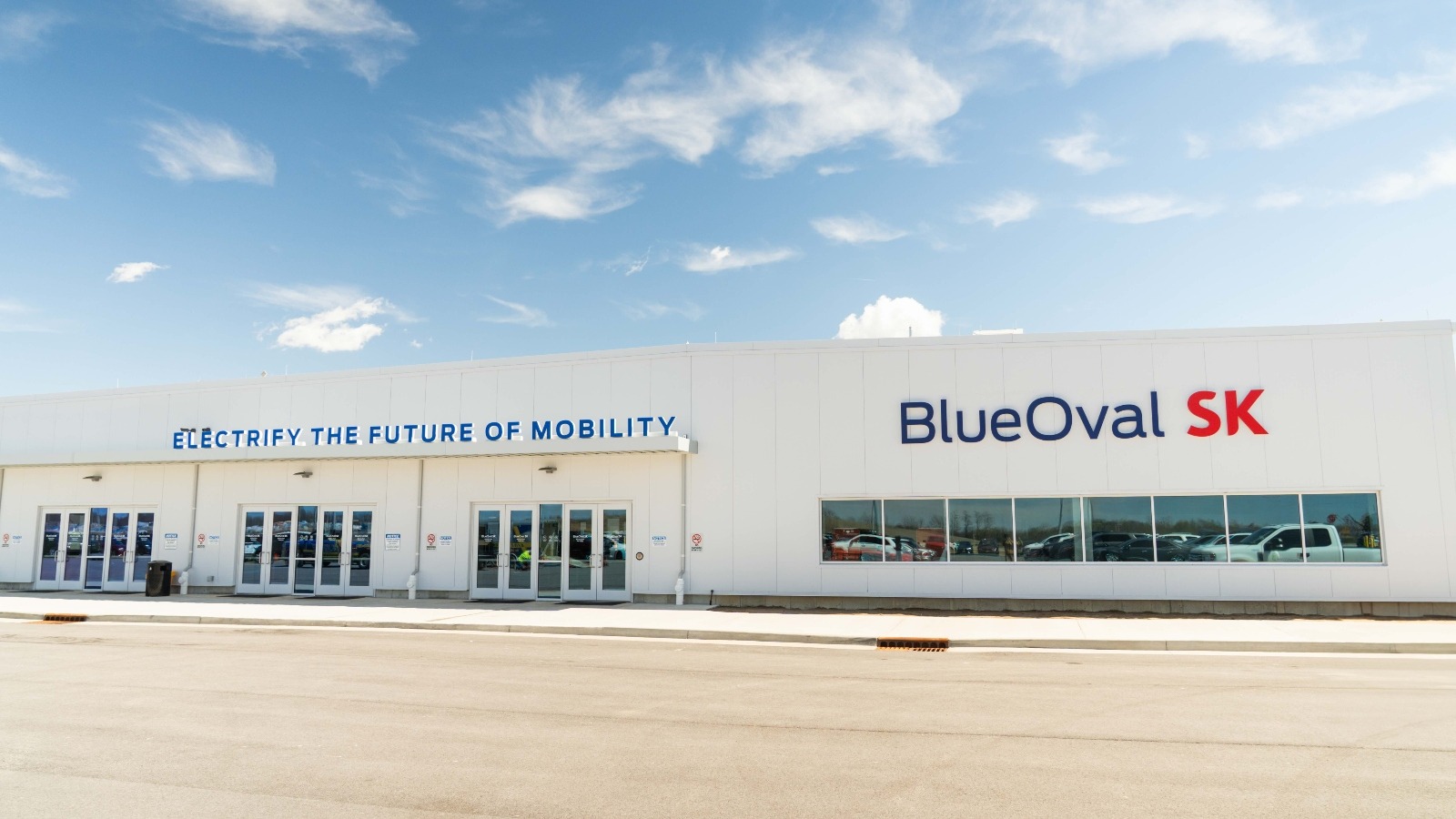To Teddy Devereux, art and science are intertwined, much like the double helix of our DNA.
Beginning more than a decade before her retirement from NIEHS in 2004, Devereux has quietly built a reputation as a glass artist, creating brilliantly colored designs out of fused glass — frequently using scientific themes or images as inspiration.
“When I started out, I looked at things that came up in the lab and thought how it would be neat to make those into art,” she said.
“The inspiration for my artwork stems from a lifelong fascination with biology and the patterns found in nature,” her website states.
 “Alveolar Type 2 Cells,” by Devereux. (Photo courtesy of Teddy Devereux)
“Alveolar Type 2 Cells,” by Devereux. (Photo courtesy of Teddy Devereux)At the time of her retirement, which followed 33 years at the institute, Devereux headed the Molecular Toxicology Group. Her work focused on liver and lung carcinogenesis, specifically the mechanisms behind varying degrees of susceptibility to lung cancer.
One of her pieces depicts alveolar type 2 cells, derived from one of her research projects that developed a method to isolate these cells for study.
An obsession is born
Devereux’s interest in glass began in earnest in 1993, when she attended a workshop on fusing glass, conducted by California artist Dan Fenton.
Each work is created by assembling glass parts, often by cutting and smoothing pieces before layering them into an image. They are then fused in a kiln, where temperatures can be raised carefully to around 1,400 degrees Fahrenheit or more. Glass powders can be used to create special effects.
“You also can fuse at a lower temperature,” Devereux explained. “Depending on what you want to do, you can get different textures and different colors. There are so many things about glass that interested me in terms of its chemistry,” she said.
“I use only one glass manufacturer because it all has to be tested for compatibility,” Devereux noted. “The transparency, the depth of field that you can get, the patterns — it is exciting to put something into the kiln and then see what comes out at the end.”
 “Kaleidoscopic Cells,” by Devereux. (Photo courtesy of Teddy Devereux)
“Kaleidoscopic Cells,” by Devereux. (Photo courtesy of Teddy Devereux)Over the years, her work has diversified, but much of her art, especially her cell-like designs, continues to be inspired by what she observed in the microscope.
“Many of my fused glass pictures and sculptures have underlying scientific themes, although my style tends toward the abstract rather than the literal,” she noted. “I view each piece as an experiment. The possibilities for creativity seem endless.”
The possibilities include using the kiln to bake bread, which Devereux did once when her oven broke down.
A growing reputation
Devereux’s art has been exhibited in many local shows throughout the years, and she is scheduled to have her first solo show outside North Carolina Dec. 10, 2021, to Jan. 29, 2022, at the Glass Axis art center in Columbus, Ohio.
Her work recently appeared as part of an online exhibition called “Viral Glass,” which was devoted to glass artists’ response to the pandemic. Devereux’s art also is displayed at 5 Points Gallery, a cooperative in Durham, North Carolina, that features the work of local artists.
She is a member of the Carolina Designer Craftsmen Guild and Glass Art Society. Her work has been featured in books about glass art, and she teaches fused glass techniques at Carolina Stained Glass in Durham.
(John Yewell is a contract writer for the NIEHS Office of Communications and Public Liaison.)
Source link
factor.niehs.nih.gov


